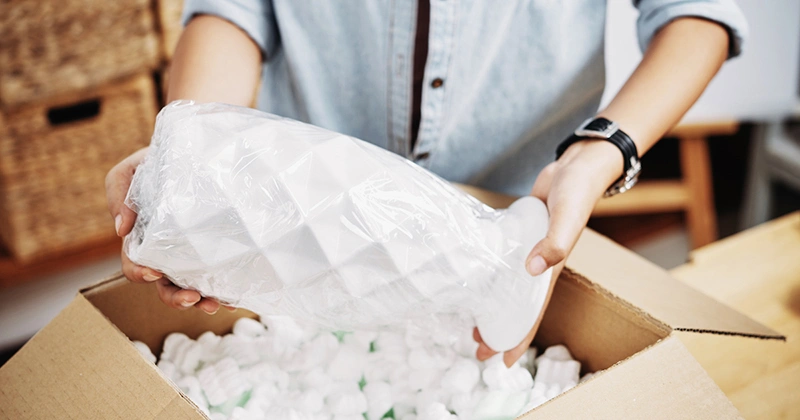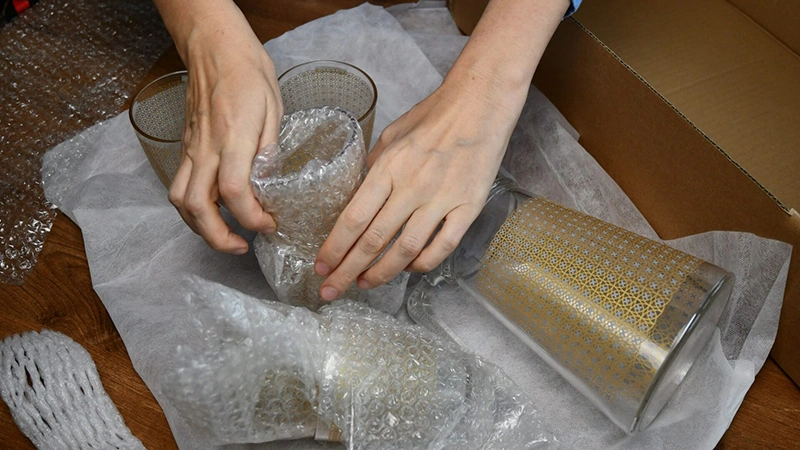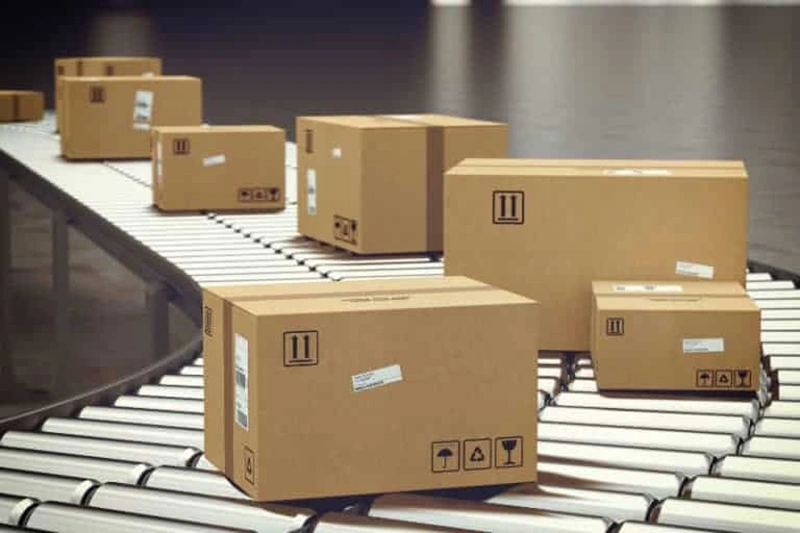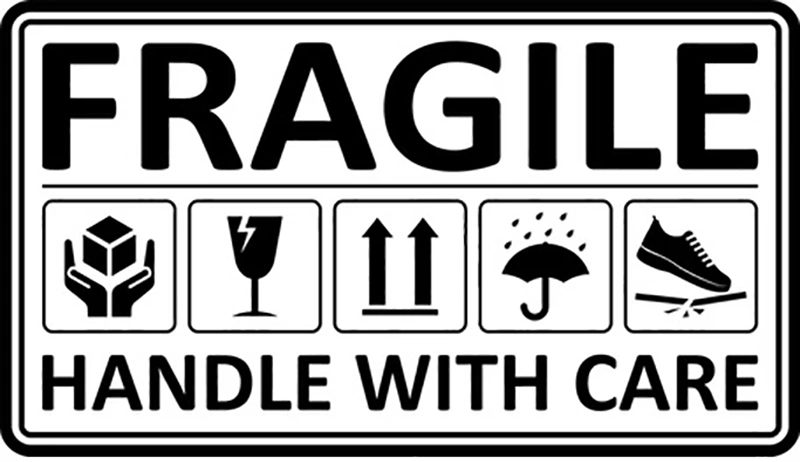This article will teach you how to pack fragile items for international shipping using a decade-proven method.
Last updated: August 2025 | Estimated reading time: 6 minutes

This article will answer your questions
- Choose the best packaging for fragile items based on weight and fragility
- Reduce shipping damage with cushioning and lining
- Prevent rough handling with labels and directional markings
- Understanding fragile product testing and insurance requirements
Individually package each fragile item
For light but fragile products, choose E-flute or B-flute corrugated cardboard + high bursting strength face paper (200-250gsm kraft paper); for heavy and fragile products, choose BC double corrugated + high ECT (edge crushing strength).

Bubble wrap
Paper packaging
Wrapped with kraft paper or buffer paper, it is environmentally friendly and can absorb a certain amount of impact. It is often used for primary protection of products to prevent them from being scratched. After crumpling, it can also be used to increase protection for corners and edges.
Reserve 20% filling space
Choose a box that’s slightly larger than your items, leaving extra space for cushioning, but don’t overstuff it. A 0–5mm tolerance for in-box sway is the gold standard for absorbing shock without damaging your product.
| Packaging Method | Best For | Protection Level | What It Means for You |
|---|---|---|---|
| Bubble Wrap | Glass, ceramics, electronics | High | Strong shock absorption; ideal for long-distance shipping |
| Kraft Paper | Lightweight fragile goods, eco-focused brands | Medium | Sustainable and cost-effective |
| Foam-in-Place | Irregular shapes, high-value products | Very High | Custom-fit protection with no movement |
Practical advice:
- Glass products: Each piece is individually wrapped in bubble wrap and then strapped with tape for reinforcement. After being placed in a corrugated box, a certain amount of pearl cotton is used to fill it for shockproofing.
- Electronic products: Prioritize primary packaging with anti-static materials, then fix with customized EVA sponge, and finally seal the box securely with tape.
- Special-shaped items: Use injection foam or molded pulp lining, and the same industry also requires filling materials to prevent shaking.
Case: An electronics factory in Shenzhen used molded paper pulp instead of foam particles to package glass lamps for export, reducing the product breakage rate from 7% to less than 1%.
Choose a sturdy outer box

Fill the spaces
Gaps can cause movement and impact damage. Fill the gap with foam, foam padding, or crumpled paper to secure the product in place.
Vertical packaging
Lower the center of gravity to avoid being top-heavy. When packing fragile items such as plates, place them vertically and separate each brand with paper to effectively prevent scratches.
Four corner reinforcement
For valuable or heavy packaging, the four corners of the outer box can be reinforced to absorb the vertical pressure during stacking, providing them with additional protection and preventing them from getting hurt.
Fragile labels and direction signs

Clear direction
Mark all sides of the box with up and down markings. Use a distinctive color—white on a black background or white on a red background—to ensure movers handle the box correctly.
Stacking prohibited
Products that cannot bear weight must be labeled “No Stacking” or covered with stacking tape. They can also be packaged on wooden pallets to prevent stacking.
Insurance for high-value fragile items
Drop and handling tests before shipment

Recommendations before bulk shipment:
Drop test: 80–100cm drop from six sides and eight corners (including bottom, edges, and corners, 5-10 drop tests)
- Vibration test: 60–120 minutes simulating sea/air transport
- Climate testing: Heat and humidity cycle, suitable for tropical destinations
New trends in fragile product packaging in 2025
- Environmentally friendly cushioning: Molded pulp replaces EPS foam, and honeycomb paper cushioning and ecological paper filling can also be considered.
- Smart Labels: Scan the code to view local language instructions for correct handling.
- Moisture-proof paperboard: Demand for PE-coated kraft paperboard increases in hot and humid areas.
Market Insights:
More and more brands are demanding insurance-approved packaging and ISTA-certified designs to reduce disputes and speed up customs clearance.
FAQs
Insufficient carton strength, insufficient inner lining, improper selection of packaging materials, failure to conduct effective packaging testing, etc., can easily lead to breakage.
Custom lining, bubble film, molded pulp, foam, they can provide efficient and lightweight cushioning performance, and are the most commonly used cushioning materials in long-distance transportation.
Follow ISO 780 marking and carrier requirements. Some countries require local language labels.
Suitable for transport and can effectively absorb impact and vibration during transportation, especially when used with outer boxes and corner protectors.
Conclusion
To ensure the safe arrival of fragile items, we must ensure the outer box is strong enough, control internal vibrations, clearly label the items for handling, and test them before shipment. Each item is individually packaged, and high-value products are insured.
Next step:
- Check the pressure and burst resistance of the current packaging
- Add lining to reduce product movement
- Test packaging concepts under real shipping conditions
About XiangGe Package
We have over 10 years of experience in designing fragile export packaging. Our solutions meet international transportation and insurance standards. We offer optional environmentally friendly materials and custom linings, and can customize a fragile package box solution for you.
Contact us: Schedule a free packaging testing consultation.
Last updated: August 2025

